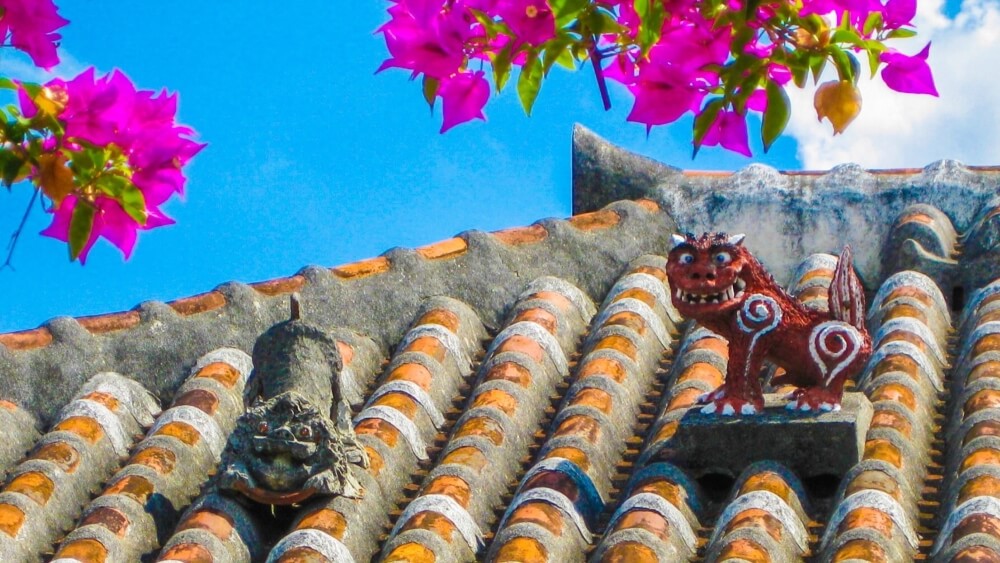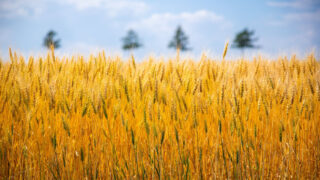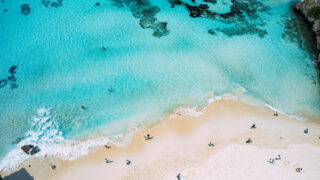Okinawa is a tropical paradise with a unique culture. In this comprehensive prefecture guide, you’ll find information that is useful for both tourism and daily life
Okinawa Basic Information
Overview of Okinawa
- Prefecture name: Okinawa
- Area: 2,282 km2 (44th / 47 prefectures)
- Population: 1,467,480 (25th / 47 prefectures)
- Website: https://www.pref.okinawa.lg.jp/
Okinawa, located at the southernmost tip of Japan, is the country’s only prefecture in the subtropical climate zone. It’s surrounded by stunning coral reefs and made up of about 700 islands, with 49 of them inhabited. Each island has its own unique culture and history, making islands hopping a delightful experience. Representative islands include Okinawa Main Island, where the prefectural capital Naha City is situated, Ishigaki Island, Miyako Island, and Yonaguni Island.
Okinawa was once the Ryukyu Kingdom, thriving until about 150 years ago, and its rich history has shaped a culture unlike anywhere else in Japan. Its history, including the period under American administration after World War II, sets it apart from mainland Japan. American military bases still remain, and you can feel the influence of American culture in everyday life.
Okinawa is a special place even for Japanese people, and it’s a popular destination for weddings and honeymoons. The islands offer a wealth of captivating elements, including beautiful beaches, historical sites, traditional dances, and music.
Location and Access
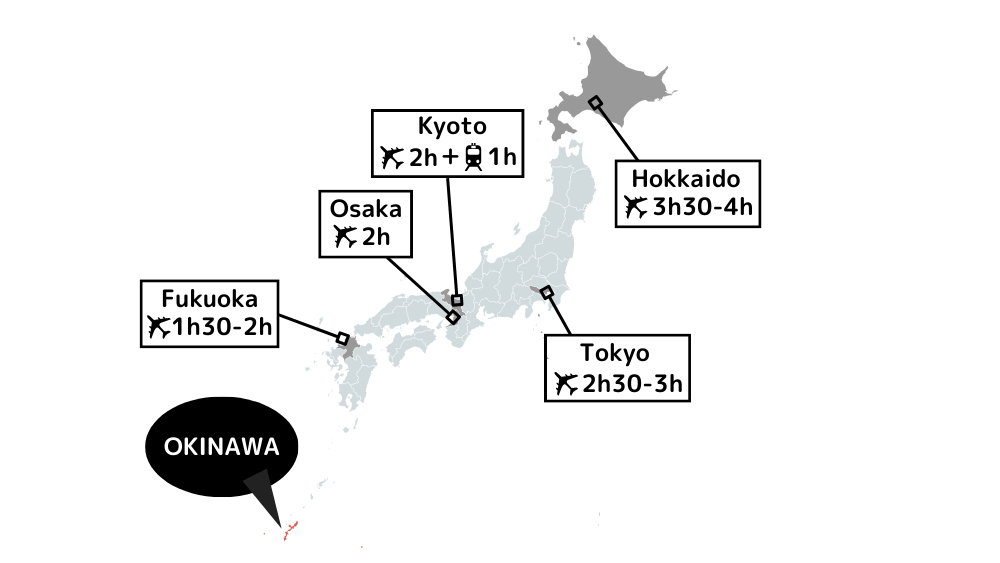
Located approximately 660 km south of mainland Japan, Okinawa can be accessed by plane or ship, however, flying is the more common and convenient option. Naha Airport provides numerous direct flights to remote islands in Okinawa prefecture, major domestic cities, and key Asian cities, ensuring high accessibility for travellers from both within Japan and abroad.
Access from Hokkaido:
- By Plane: Direct flights from New Chitose Airport to Naha Airport take approximately 3.5 to 4 hours.
Access from Tokyo:
- By Plane: Direct flights from Haneda Airport or Narita Airport to Naha Airport take approximately 2.5 to 3 hours.
Access from Kyoto:
- By Plane: A 1-hour train to Kansai International Airport or Itami Airport from Kyoto station, then take approximately 2 hours by Direct flights to Naha Airport.
Access from Osaka:
- By Plane: Direct flights from Kansai International Airport or Itami Airport to Naha Airport take approximately 2 hours.
Access from Fukuoka:
- By Plane: Direct flights from Fukuoka Airport to Naha Airport take approximately 1.5 to 2 hours.
Climate in Okinawa

While Okinawa has four seasons, winters are relatively mild, and summers are hot and humid. Spring brings the rainy season, summer sees typhoons, and strong winds blow in winter.
Spring (March to May): The beach season begins in March, and the region enters the rainy season earlier than other areas of Japan, leading to continuous rainy days in May.
- Average High Temperature: 23-27°C
- Average Low Temperature: 16-20°C
Summer (June to August): When there is no typhoon, the weather is hot and sunny. With high water temperatures, summer is perfect for enjoying the sea.
- Average High Temperature: 30-33°C
- Average Low Temperature: 24-27°C
Autumn (September to November): The heat of summer lingers, but the frequency of typhoons decreases, resulting in stable weather.
- Average High Temperature: 26-30°C
- Average Low Temperature: 20-24°C
Winter (December to February): Although relatively warm, strong seasonal winds can make it feel colder than the temperature indicates.
- Average High Temperature: 18-22°C
- Average Low Temperature: 12-16°C
Transportation in Okinawa
There is no train system within the prefecture. Instead, monorails operate in Naha City. Inter-island travel is typically done by car, ship or plane. Buses and taxis are common means of transportation within islands, and some islands offer tourist buses and rental cars.
Monorail
The monorail, locally known as “Yui Rail,” is utilised for tourism and commuting within Naha City. It connects Naha Airport to various destinations such as Kokusai Street, a tourist district, to the business district, and Shuri, an area known for its historical sites.
While transportation IC cards like Suica and Pasmo can be used, be aware that Okica, issued by the Yui Rail, is not usable in other prefectures.

Air Plane
For travel between the main island of Okinawa and distant islands such as Ishigaki Island, Miyako Island, and Yonaguni Island, travel by plane is the only option. Ryukyu Air Commuter (RAC), an airline under the JAL group, covers local routes not served by JAL and ANA. Prices vary depending on the season and timing of purchase, but are generally around 10,000 yen one way.
Ferry / High-speed boat
Multiple ferry companies operate in Okinawa, offering access to various small and large islands. From Tomari port in Naha, you can reach places like the Kerama Islands and Kume Island. From Ishigaki Island, you can enjoy island hopping to destinations such as Iriomote Island, Taketomi Island, and Kohama Island.
Due to strong winds in winter, some services may be cancelled, so it’s advisable to check updated information a day before your departure.
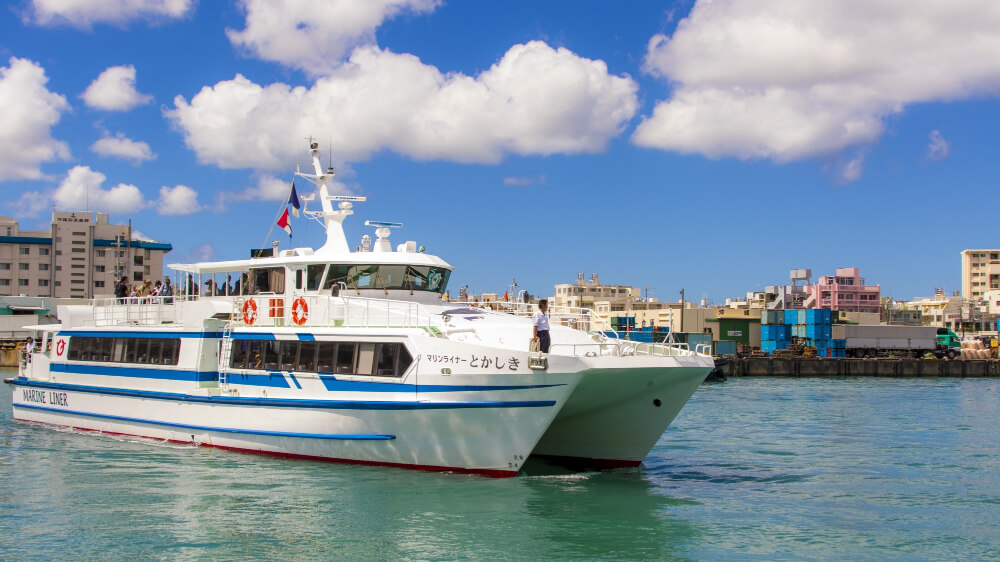
Bus
With no trains in Okinawa, buses serve as the primary public transportation. However, in some areas, information may not be available in English, and buses may not always run on schedule.
Taxi
Taxis are widely used in Okinawa, with an initial fare of 600 yen. Taxis are easy to find, especially in tourist areas. Taxi apps are available, but the number of vehicles may be limited, so it’s reassuring to request one in advance at hotels or tourist information centres.
Rental Car
If you have an international driving license, renting a car might be the best option for intra-island travel. Both locals and visitors commonly use cars for mobility. Finding rental car companies with English support is not difficult, and you can even rent manual cars, which is rare in other prefectures.
Okinawa Living
Living Environment
Okinawa’s year-round warm climate makes it perfect for those who dislike the cold. Its stunning beaches and mountains attract nature lovers, while plenty of family-friendly facilities and attractions make it an ideal site for families. The island has a diverse community, with residents from Japan, nearby countries, and a large American military presence. Jobs that require foreign language skills are fairly easy to find.
On the flip side, Okinawa is frequently hit by typhoons, so it’s important to be aware of their potential impact if you’re considering moving here. In particular, isolated islands may face food shortages or become difficult to evacuate from.
Naha, the capital city of Okinawa prefecture, has reasonably developed public transportation, so it’s possible to live without a car. However, on the outer islands or in rural areas, owning a car is essential. Utilities like internet, gas, and water are reliable in cities but may be less so on remote islands.
Cost of Living in Okinawa
The cost of living in Okinawa is generally lower than in Tokyo, but it can still be relatively high for the town size. In urban areas like Naha, rent is about 50,000 to 60,000 yen for a one-bed apartment and 70,000 to 90,000 yen for a family-sized unit. Rent decreases to 35,000 to 50,000 yen for one-bed apartments and 60,000 to 70,000 yen for family units on the outskirts or northern parts of the main island. On remote islands, rent can be higher than in Tokyo, and availability may be limited.
Due to transportation relying solely on ships and planes, groceries and daily necessities are more expensive than on the mainland. Utilities, including summer air conditioning, add to the cost and are slightly higher than in other major cities. Transportation costs in Okinawa, where it is common to travel by car, are affected by the cost of petrol and parking. The average monthly living cost in Okinawa, including rent, is around 150,000 yen.
Okinawa Travel Guide
Top Tourist Attractions
Remote Islands
In addition to Okinawa Main Island, where Naha City is located, there are several enchanting remote islands in Okinawa. Each island has its own unique charm, such as the Kerama Islands with their unbelievably beautiful beaches, Iriomote Island with its lush jungles, and Taketomi Island with its preserved traditional scenery. If time and budget allow, be sure to explore these remote islands!
Churaumi Aquarium
Accessible in 2 hours by direct bus from Naha City, this aquarium is Okinawa’s most popular tourist destination. One of the world’s largest tank spans multiple floors and features a diverse range of marine life, including whale sharks and manta rays. The site also includes a botanical garden and a beach that you can enjoy all day long.
Website: https://churaumi.okinawa/en/
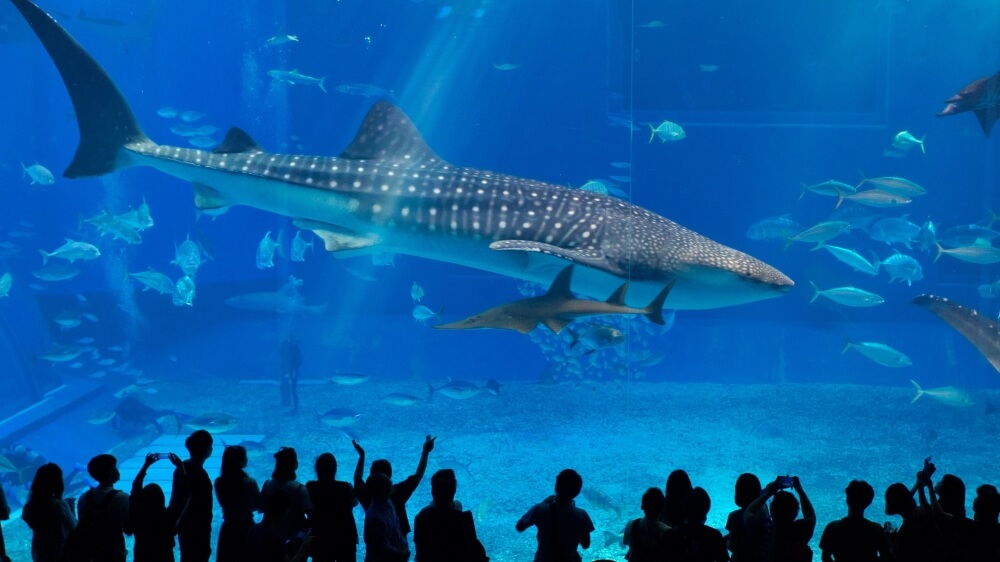
Yambaru National Park
Spanning about 200 square kilometres, this national park is home to unique species such as the Yambaru kuina and Yambaru ushi, creating its own ecosystem. The park includes numerous waterfalls and caves, making it a popular spot for bird-watching and trekking.
Website: https://www.env.go.jp/en/nature/nps/park/yambaru/index.html
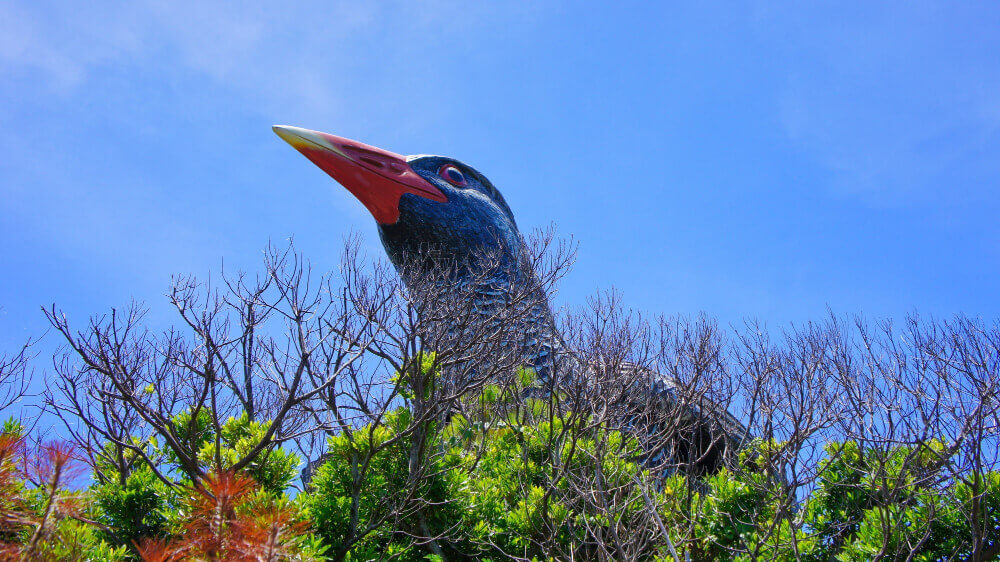
Blue Cave
Located about 90 minutes by car or bus north of Naha City, the Blue Cave is a mysterious cavern surrounded by a stunning blue glow. Accessible by swimming from Cape Maeda or by joining a boat tour from a port, it’s suggested to check their website ahead, as swimming may be restricted on days with high waves.
Website: https://blue-cave.okinawa/
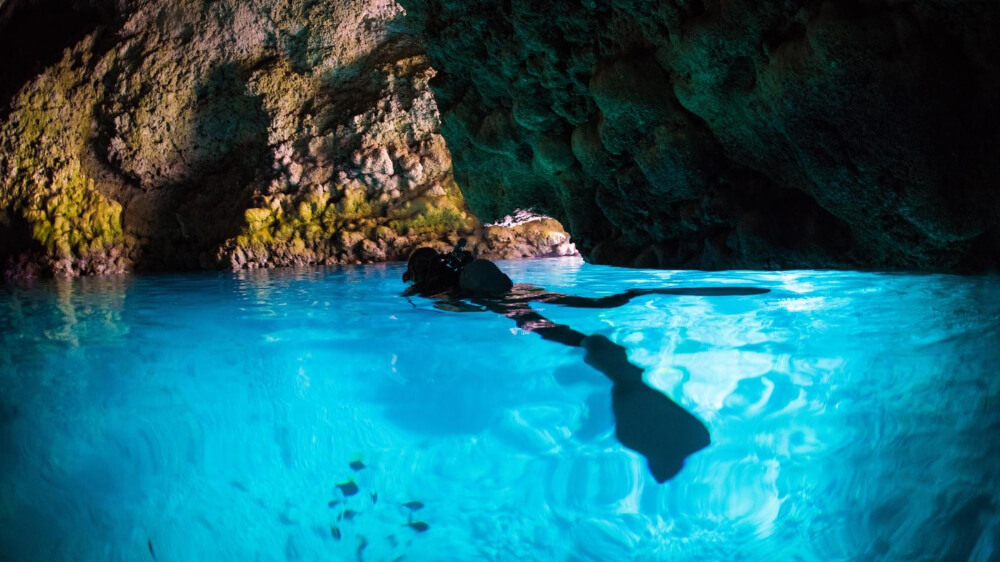
American Village
A resort area located about 30 minutes north of Naha City, American Village exudes the atmosphere of the American West Coast. There’s a variety of shops and restaurants, making it a great place for finding Okinawan souvenirs.
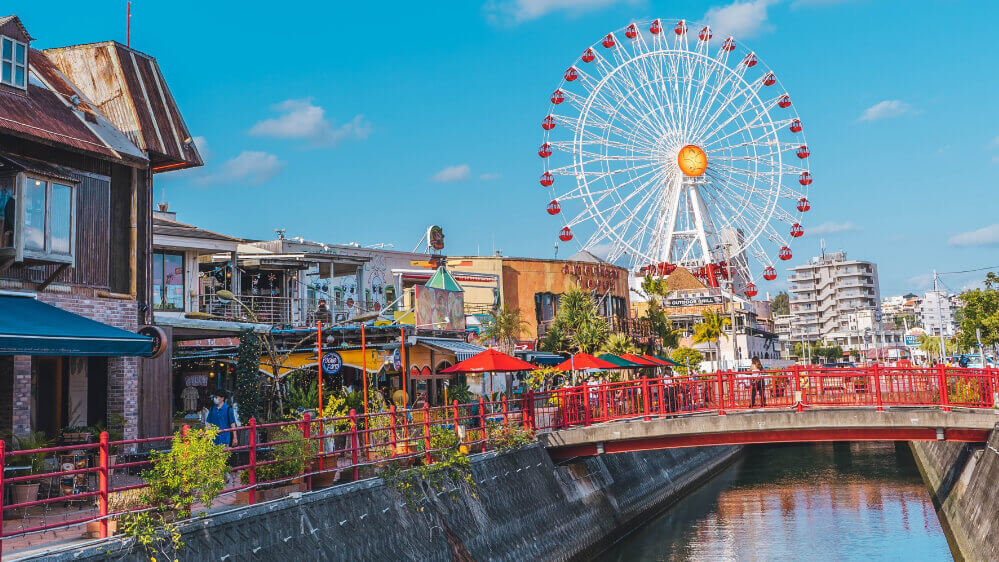
Shuri Castle
Shuri Castle served as the castle of the Ryukyu Kingdom, preserving precious heritage until it was severely damaged in a fire in 2019. Reconstruction efforts are underway, and visitors can tour the restoration site.
Website: https://oki-park.jp/shurijo/en/
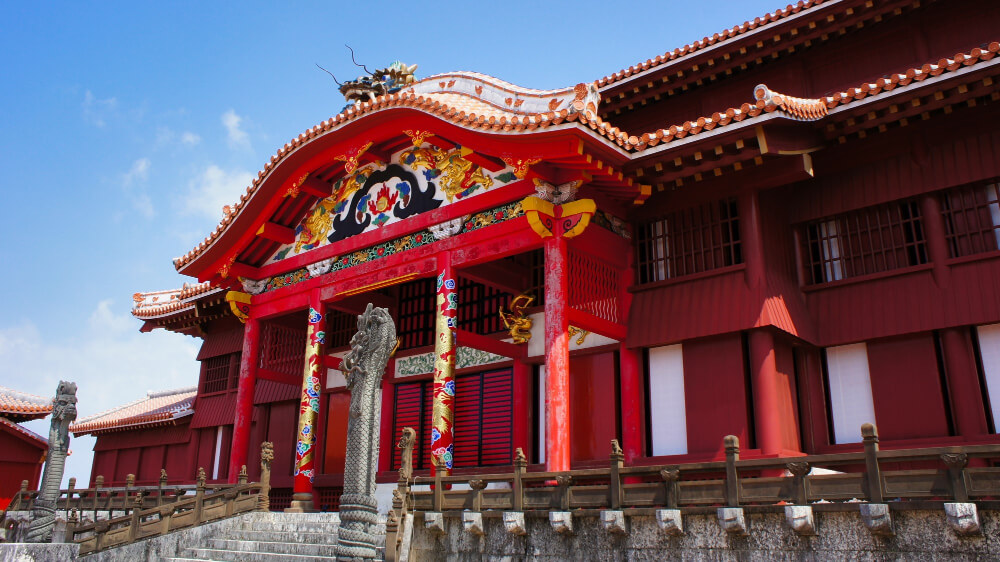
Kokusai Dori (International Street)
A 1.6-kilometre-long street in the heart of Naha, filled with souvenir shops, hotels, and restaurants. On Sundays, it becomes a pedestrian road, hosting various events and festivals.
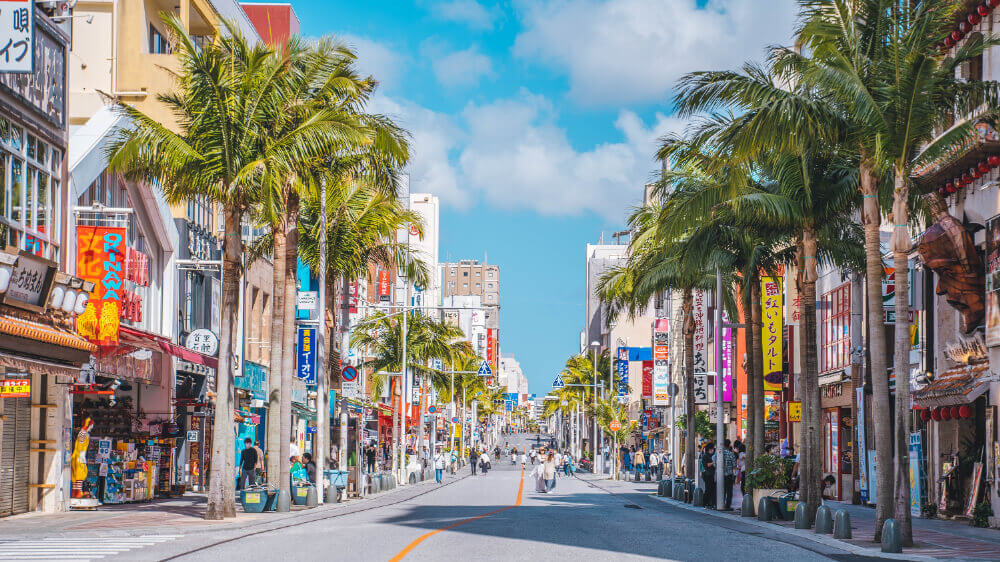
Okinawa Food Specialities
- Okinawa Soba: A noodle dish with a light broth based on ingredients like pork. It’s topped with pork belly (san-mai-niku) or pork rib (soki) and red pickled ginger, and you can add “Kooreeguusu,” a spicy condiment, to change the taste.
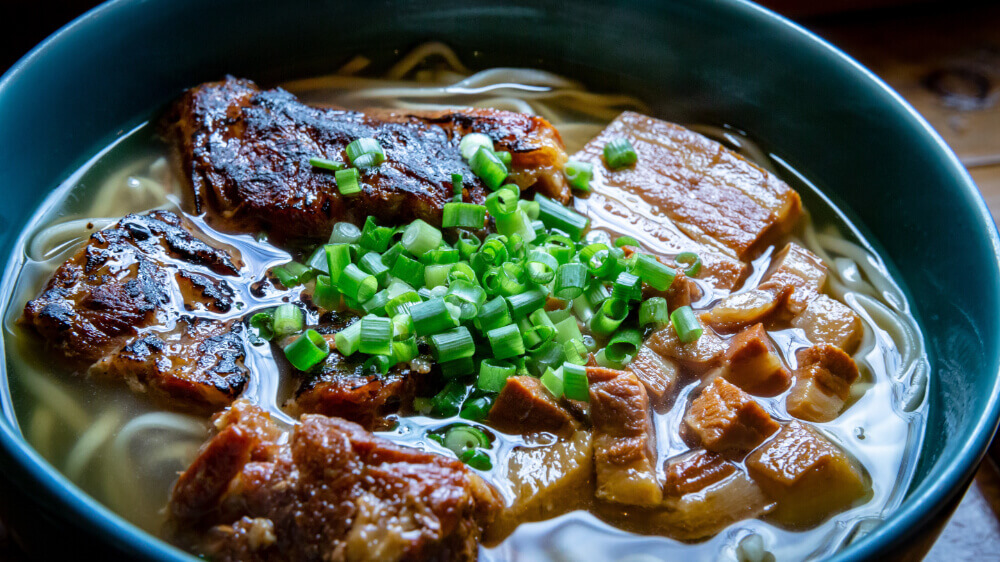
- Chanpuru: An Okinawan stir-fry dish that means “mixed things.” Champuru made with bitter melon, a typical Okinawan vegetable, and healthy fu chanpuru are recommended variations.
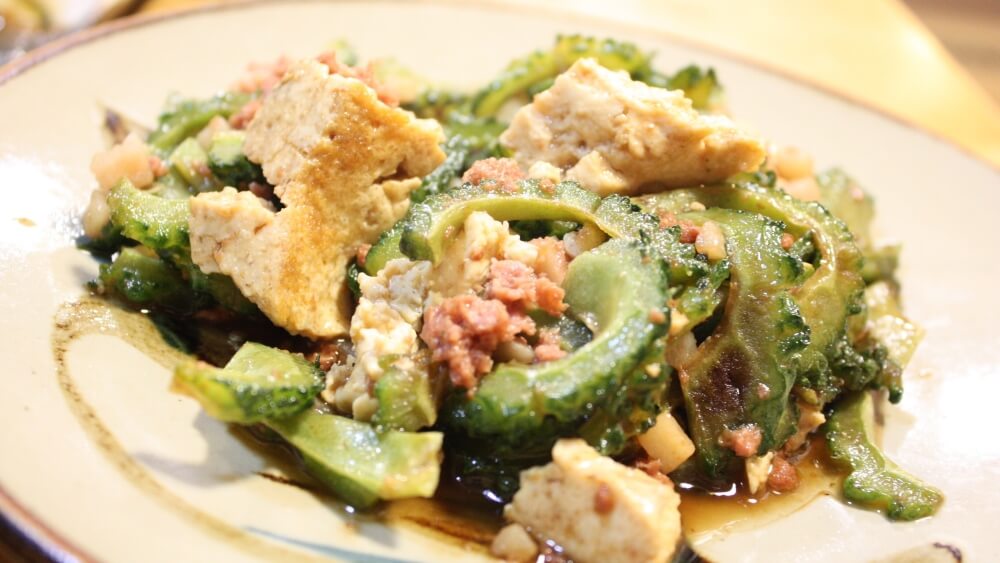
- Taco Rice: A fusion dish with rice topped with Mexican taco ingredients. It includes lettuce and salsa sauce with a generous sprinkle of cheese.
- Sea Grapes (Umibudo): A type of seaweed that only grows in warm seas, eaten raw with soy sauce and dashi. The popping texture in the mouth is popular.
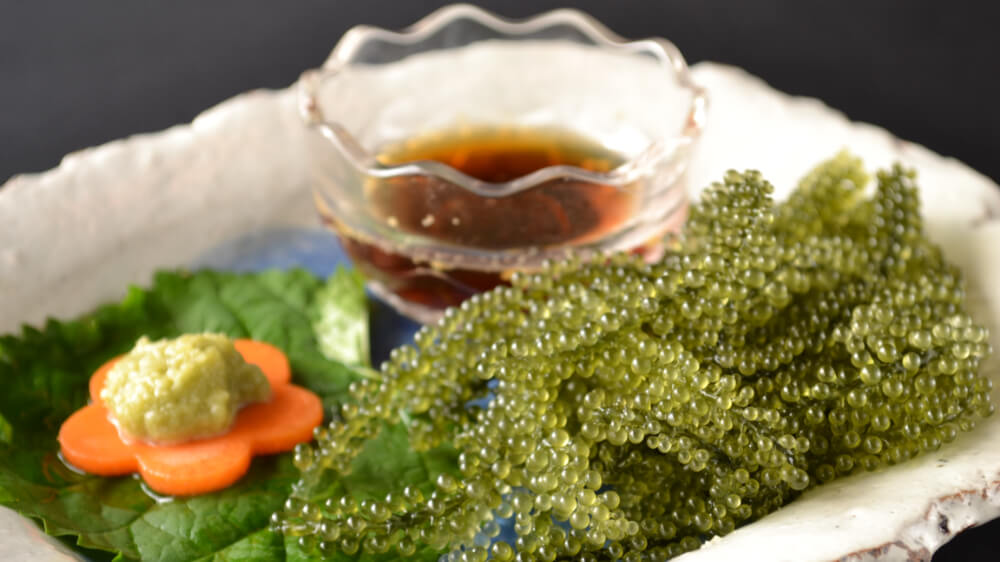
- Chinsuko: A traditional biscuit dating back to the Ryukyu Kingdom era, made with wheat flour, lard, and sugar. Recent variations include chocolate pineapple and more flavours.
Seasonal Events & Festivals
Having nurtured its unique culture, Okinawa hosts many cultural events. Many events are held according to the lunar calendar in Okinawa.
- Eisa Festival: A traditional event held around the Mid-Autumn Festival each year, dedicated to ancestral spirits. The powerful performances of Japanese drums and the earnest dances of performers make it a popular summer event. While Eisa festivals are held throughout the islands, Okinawa Zento Eisa, taking place over three days in Okinawa City (Koza), is the largest.
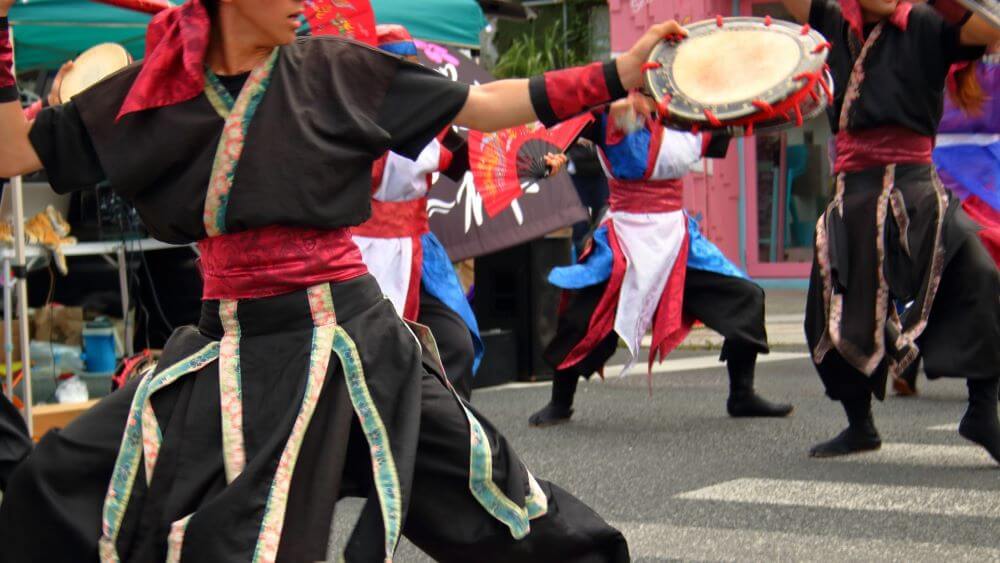
- Hari: Held every May, Hari is an event where people pray for safe navigation and a bountiful catch. Traditional fishing boats called Sabani compete in rowing, creating a powerful spectacle. The Hari in Itoman City is the most famous, attracting over 30,000 spectators each year.
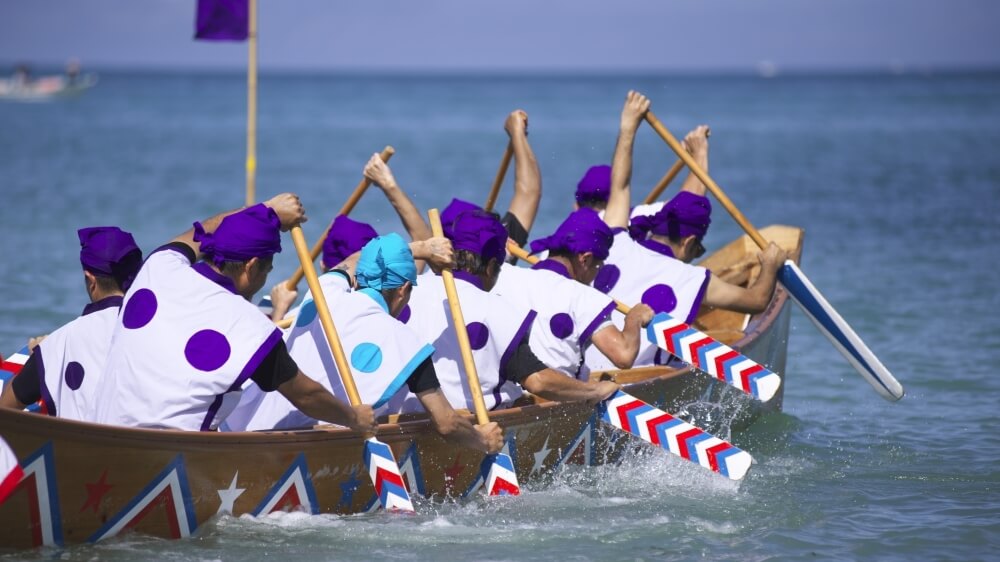
- Tug-of-War: An annual traditional event held in October in Naha. Over 20,000 participants split into east and west teams to pull a 200-meter-long rope, creating a dynamic spectacle. Anyone can join on the day.
- Ryukyu Kaiensai: Known as Japan’s earliest fireworks festival, it features approximately 10,000 fireworks lighting up the sky. Held every mid-April at Tropical Beach in Ginowan City.
- Sakura Festival: Also recognised as Japan’s earliest cherry blossom festival, it takes place annually from late January to early February in northern Okinawa. Visitors can enjoy the bright pink hues of the Kanhi-zakura, a cherry blossom variety distinct from those in other regions.
The world-class beaches, abundant ecosystems, and unique traditional culture make Okinawa’s charm inexhaustible, no matter how many days one spends there!
